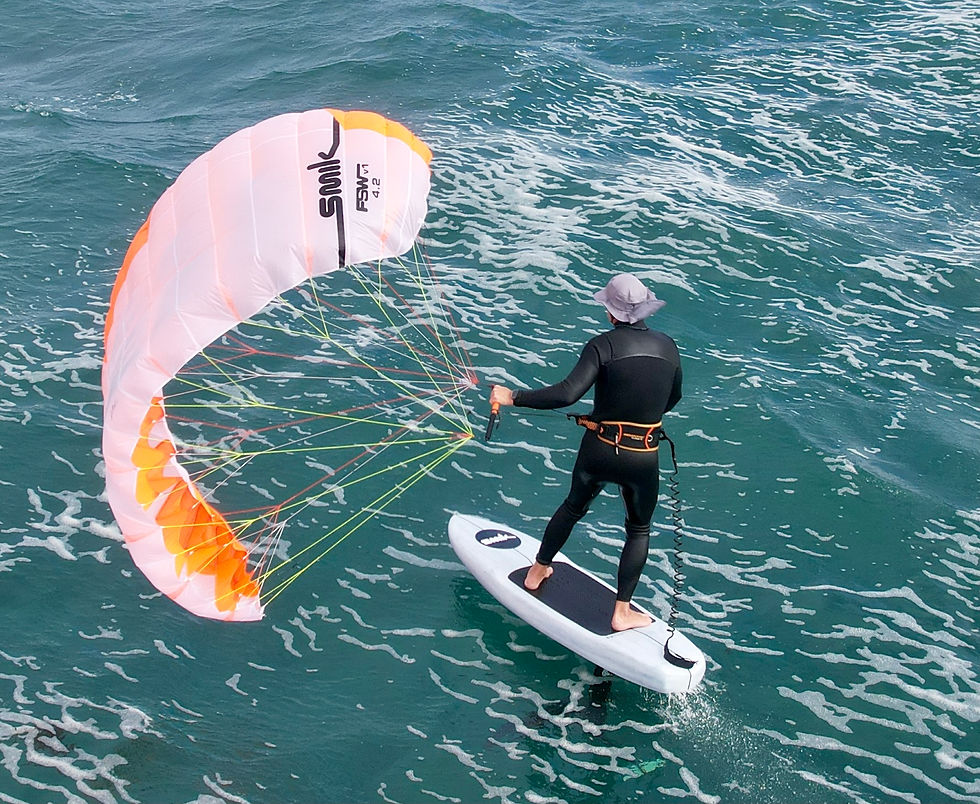parawings and boards




In a releatively new sport, the advancements in design is happening at hyperspeed. We have been testing diligently and waited to make sure that our wings and boards are on point, Scroll down to see what we've been up to
The WING

sizes 3.2 m 4.2m. 5.0m
Certain key design points have been adressed with the Smik Parawing
- You need to know which way is the right way. Colour coded bridles, leading edge and custom carbon bar all help achieve this.
-STABILITY IN FLIGHT Due to a parawings relative inefficiency in powering you up onto your foil compared to inflatable wingfoiling, the wing has to be stable and pull from a controlled point and not be dancing around as to try to generate speed/ power and lift. 4sets of bridles help in achieving this stability.
WIND RANGE ; on a para wing is also very small compared to wingfoiling, wich is why we've aimed toget as much low end power as possible, whilst being able to de-power when overpowered. This is a fine balance in tuning getting the angle of attack on the leading edge right comined with the exhaust out the trailing edge, whilst not having the wing fold in half when under pressure.
LEADING EDGE ; needs to be able to sustain itself in low winds, whilst the wing tips shouldn't collapse when overpowered.
LIGHTWEIGHT ; Not only does the material need to be lightweight in order to compress easily and small for downwinding, but the light weight material actually enhances stability and improved handling through the jibes.

The BOARD
The inefficiencies of the Parawing is what has inspired this truely unique shape to helop you up onto the foil with enhanced glide and rocking up onto the foil with higher volume boards feeling smaller once you're up on foil. Without a shadow of a doubt being the ultimate downwind parawing board on the market. below are featured pictures with explanations as to why this is the case.
If you thought your current midlength is the ideal board for parawinging, we're about to give you second thoughts
5'4 x 21 @80L 5'8x21.5@89L 6'0x22@106L 6'3x23 115L


Deep V double concave nose with hard chined bevelled rails.
-early Lift
-Aerodynamic through the air
-seamless touchdowns
High volume large area blocky rails help on multiple levels.
-volume behind back foot for helping cork the board up onto foil
-super stable for when immersed in water and when winds are not optimum trying to pump up onto foil. Or when the wind drops, you can still make it home.


Sunken deck brings your feet closer to the foil giving a more connected feeling/ and that of a smaller volume board.
Front and rear ridges provide knoedge of where yo're standing as well as something to push off of.
Rocker line of dead flat into a tail kick works perfectly with the extra tail area and volume to assist you get up on foil with the comination of good glide and the corking / rocking the board up.
sleek outline and pulled down deck rail aid in aero efficency. Once again with predominant amount of foam /volume behind you.

